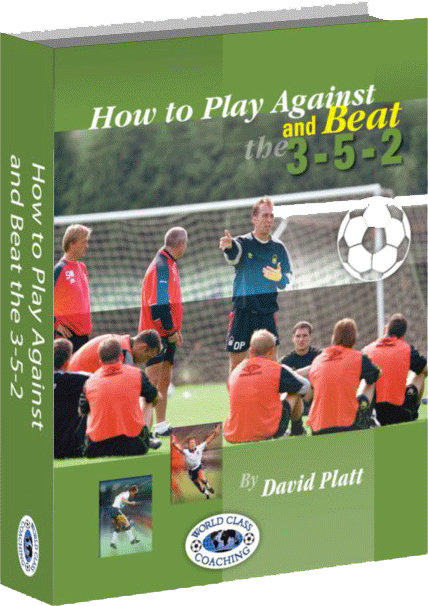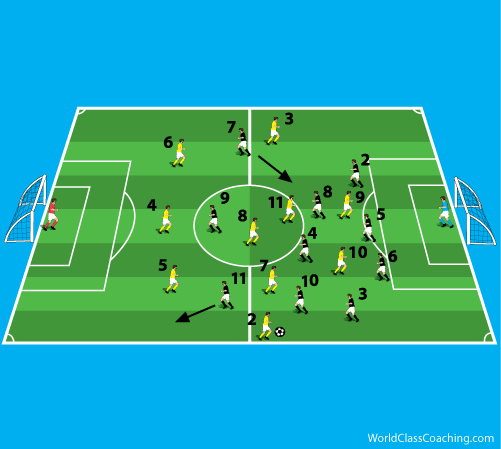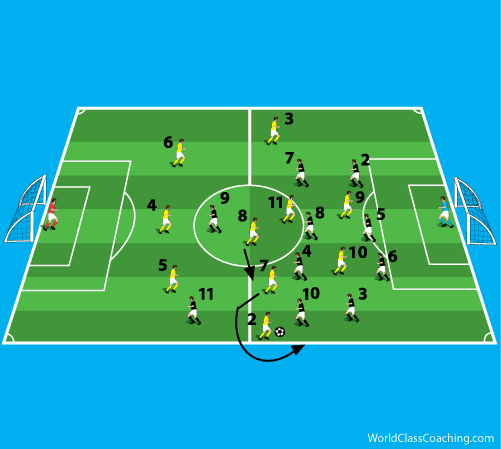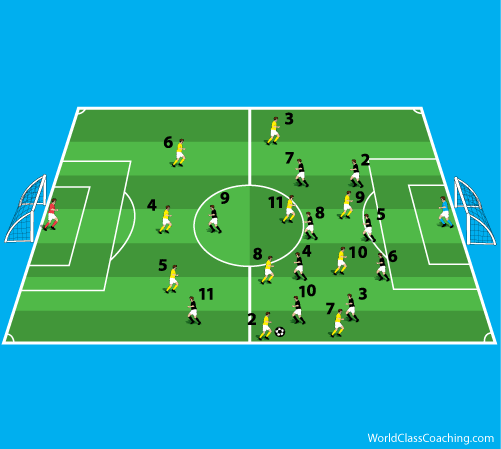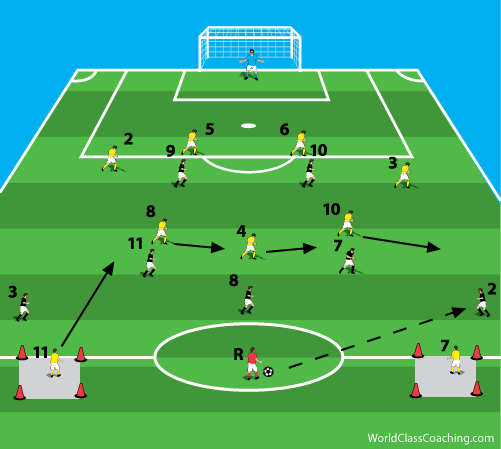Every systems has it's strengths and weaknesses. In previous posts I've described why I feel that the 4-3-3 is a great system to teach players the game. While I believe in playing our own best game regardless of what the opposition is trying to do, playing against other systems provides challenges that the players need to learn to deal with. In the next few weeks I'll show you how I've taught my teams to handle these differences.
Teams that know you are playing with three in the midfield might try to overwhelm these players by having five in the midfield. Being outnumbered in this area creates a problem for the midfielders to solve.
David Platt, current First Team Coach for Manchester City FC, wrote a series of books with us called, "How to Play Against and Beat..." The books describe the strengths, weaknesses and how to combat the 4-4-2, 3-5-2 and 4-3-3. As a former England Captain, and coach with Nottingham Forest, Sampdoria and England U21, Platt's knowledge and insight on the tactics of the game are second to none.
Here is how Platt describes the challenges in the midfield and a game to help train your players to deal with it.
The central midfield 3 have to be very hard working as they must cover the whole width of the field, leaving the two wingers to be bale to operate in the offensive part of the field as much as is possible. Here the left sided central midfield player, 10, has shuffled across and continues to attempt to force the play outside towards the touchline, in the knowledge that one of the strengths of the 352 is its central attacking propensity. Number 10’s position should be such that if a straight line was drawn from the ball through his body it would continue goal-wards and dissect the near post of the goal. With the central midfielders shuffling all the way across to defend the situation, it is important that the weak side winger, 7, balances the team off by dropping deeper into a half and half position, from where he can help out if needed but if the ball is won he is well positioned to join in the counter attack. The left side winger, 11, pulls into a wide position in an effort to disturb the 3 man central defensive unit of the 3-5-2.
As we stated in the Strengths & Weaknesses Chapter, in order to support the wing back when the ball is in wide positions, elaborate movement from inside to out is needed. One of the features of the 352 is the overlap of the wing back by the inside central midfielder, 7, whose movement is designed to not only provide an option for the wing back on the ball, 2, but also to create the space inside for the anchor player, 8, to get on the ball. The importance of our 3 to retain his zonal shape in line with the other defenders is fundamental in negating this type of movement from making us lose our shape.
By retaining this zonal unit, our 3 can accept the run of 7 and if the position of our 10 is correct to show outside then the only easy pass possible is the ball down the touchline for 7 who has made the run.
Practice for Defending in the Mid Third
Here is one of a number of practices Platt describes to work on the movement required to deal with five midfielders.
Whichever side the ball goes the opposite winger drops in to balance off the team.
To score, win the ball and pass to winger in box outside of pitch.
Here's a link to the, "How to Play Against and Beat" series.
Have a Great Day,
Tom Mura

